STUDI IDENTIFIKASI RELOKASI ATAU REKONSTRUKSI TEMPAT TINGGAL SEBAGAI SEBUAH PILIHAN PENANGANAN PASCA GEMPA CIANJUR 2022 BERBASIS PERSPEKTIF MASYARAKAT
Abstract
On November 21st, 2022, at 13:21:10 WIB, the Cianjur Earthquake occurred. The epicentre of the earthquake was at coordinates 6.84 LS 107.05 and a depth of 11 km with a magnitude of M5.6. As of November 28, 2022, at 07:00 WIB, the BMKG had recorded 297 aftershocks, with the largest magnitude of M4.2 and the smallest of M1.0. The National Disaster Management Agency, or BNPB, recorded that 334 people died, 1,000 were injured, 20 were missing, and 58,000 were displaced. After the earthquake, landscape conditions can change, and various environmental infrastructure facilities included in the infrastructure are damaged. According to the findings of the study, 75% of the 150 respondents owned their own home. The average affected building has an area of less than 72 m2, while 56% of the main road is still passable. When the earthquake occurred, the community did not experience difficulties in procuring drinking water, and the condition of the rice fields as the land for earning a living for the residents was only 19% damaged. Another significant result related to the damage to buildings and infrastructure caused by the Cianjur earthquake was felt to be less worrying. So that the results obtained were that the community members' disagreement with relocation reached 77%. Reconstruction can be carried out if an area at a certain location is in an area that has a small-scale disaster risk threat with not too frequent return periods, and the level of risk can still be minimized through a policy or development. When the value of the loss that will be felt by the community is much greater, then relocation is the best alternative.
Metrics
Downloads
References
[BNPB] Badan Nasional Penaggulangan Bencana. 2022. Diakses melalui https://bnpb.go.id/.
Bahri, S. 2022. Pemenuhan kebutuhan bagi korban Gempa Cianjur dari pemerintah, lembaga badan swasta dan masyarakat Indonesia. Mizania: Jurnal Ekonomi dan Akuntansi, 2(2), 236-240. https://doi.org/10.47776/mizania.v2i2.590.
Bier, V.M. 2017. Understanding and mitigating the impacts of massive relocations due to disasters, EconDisCliCha, 1, 179-202 https://doi.org/10.1007/s41885-017-0003-4.
Bronen, R., Chapin, F.S. 2013. Adaptive governance and institusional strategies for climate-induced community relocations in Alaska. Proceedings of the National Academy of Sciences, 110(23), 9320-9325. https://doi.org/10.1073/pnas.1210508110.
Ekayani, M. 2014. Wisata alam sebagai jembatan ekonomi dan ekologi di Taman Nasional Gunung Halimun Salak. Jurnal Risalah Kebijakan Pertanian dan Lingkungan, 1(1), 40-45. https://journal.ipb.ac.id/index.php/jkebijakan/article/view/10278.
Imura, M., Shaw, R 2009. Challenges and potentials of post-disaster relocation. Asian Journal of Environment and Disaster Management, 1(2), 199–221. https://doi.org/10.3850/S1793924009000029.
Jha, A.K 2010. Safer Homes, Stronger Communities: A Handbook for Reconstructing After Natural Disaster. Washington: The World Bank.
Kaswanto, R.L. 2017. Management of Landscape Services for Improving Community Welfare in West Java, Indonesia. Dalam Hong, S.K., Nakagoshi, N. (Eds), Landscape Ecology for Sustainable Society. Springer, Cham. https://doi.org/10.1007/978-3-319-74328-8_15.
Katiyar, S.K., Khandelwal, R. 2001. Relocation in Kutch: Bringing old fault. Economic and Weekly, 36(2), 2319-2321.https://www.jstor.org/stable/4410795.
Mahapatra, A.K., Tewari D.D., Baboo, B. 2015. Displacement, deprivation and development: the impact of relocation on income and livelihood of tribes in similipal tiger and biosphere reserve, India. Environ Manage, 56(2), 420-32. https://doi.org/10.1007/s00267-015-0507-z.
Milson, J., Masson, D., Nichols, G., Sikumbang, N., Dwiyanto, B., Parson, L., Kallagher, H. 1992. The Manokwari trough and The Western End of The New Guinea Trench. Tectonics. 11, 145-153. https://doi.org/10.1029/91TC01257.
Mulyana, B., Pamungkas, R.A., Abdurrasyid, A. 2023. Desa tanggap darurat melalui pemeriksaan kesehatan dan edukasi penatalaksanaan kegawatdaruratan bencana di Ciherang Pacet Cianjur Jawa Barat. Jurnal Abdi Masyarakat Indonesia, 3(2), 563–570. https://doi.org/10.54082/jamsi.679.
Nilsson, B. 2010. Ideology, environment and forced relocation: kiruna-a town on the move. European Urban and Regional Studies, 17(4), 433–442. https://doi.org/10.1177/0969776410369045.
Oakle, D., Ruel, E., Reid, L. 2013. It was really hard. It was alright. It was easy, public housing relocation experiences and destination satisfaction in Atlanta’, Cityscape, 15(2), 173-192. https://www.jstor.org/stable/41959118.
Oliver-Smith, A. 1991. Successes and failures in post disaster resettlement. Disasters, 15(1), 12–23. https://doi.org/10.1111/j.1467-7717.1991.tb00423.x.
Sipe, N., Karen, V. 2014. Relocationg a flood-affected community: Good planning or good politics. Journal of the American Planning Association, 80(4), 400-412. https://doi.org/10.1080/01944363.2014.976586.
Smith, K., Petley, D.N. 2008. Environmental Hazards: Assessing Risk and Reducing Disaster. (5th ed). New York: Routledge, Taylor & Francis e-Library.
Some, W., Hafidz, W., Sauter, G. 2009. Renovation not relocation: the Work of Paguyuban Warga Strenkali (PWS) in Indonesia. Environment & Urbanization, 21(2), 463-475. https://doi.org/10.1177/0956247809343766.
Copyright (c) 2023 RISALAH KEBIJAKAN PERTANIAN DAN LINGKUNGAN: Rumusan Kajian Strategis Bidang Pertanian dan Lingkungan

This work is licensed under a Creative Commons Attribution 4.0 International License.
PUBLICATION ETHICS
Jurnal Risalah Kebijakan Pembangunan Pertanian dan Lingkungan (JRKPL) is a peer-reviewed journal publishing original research to develop a coherent and respected network of landscape architecture knowledge. JRKPL committed to upholding the highest standards of publication ethics that clarifies ethical behavior of all parties involved in publishing a scientific article in JRKPL.
As publisher of JRKPL, PSP3-LPPM IPB and PERHEPI takes its duties of guardianship all stages of publishing process and we recognize our ethical and other responsibilities.
Duties of Authors
An author should not publish manuscripts describing essentially the same research in more than one journal or primary publication. Submitting the same manuscript to more than one journal is unacceptable and constitutes unethical publishing behavior. In general, an author should not submit for consideration in another journal a previously published paper.
Authorship should be limited to those who have made a significant contribution to the manuscript and should be listed as co-authors. Where there are others who have participated in certain substantive aspects of the research project, they should be acknowledged as contributors. The corresponding author should ensure that all co-authors have seen and approved the final version of the paper and have agreed to its submission for publication.
The authors should ensure that they have written entirely original works, and if the authors have used the work and/or words of others, that this has been appropriately cited or quoted. Plagiarism are include passing off another paper as the author own paper, copying or paraphrasing substantial parts of another paper (without attribution) and claiming results from research conducted by others. Plagiarism constitutes unethical publishing behavior and is unacceptable. Plagiarism detected works will be banned for further publication procedure.
The authors acknowledge that they have disclosed all and any actual or potential conflicts of interest with their work or partial benefits associated with it. All sources of financial support for the project should be disclosed. Potential conflicts of interest should be disclosed at the earliest stage possible.
Duties of the Editorial Board
Review Process
JRKPL is committed to objective and fair double-blind peer-review to prevent any actual or potential conflict of interests between the editorial and review personnel and the reviewed material. JRKPL chooses reviewers based on their expertise (whose most closely matches the topic of the paper). At least 2 reviewers are invited to evaluate a manuscript. In cases of controversy or disagreement regarding the merits of the work, an additional review will be solicited. The JRKPL editor mediates all interaction between authors and reviewers, and the review results owned by JRKPL.
Publication Decisions
The editor of a peer-reviewed JRKPL is responsible for deciding which of the articles submitted to the journal should be published. The validation of the work in question and its importance to researchers and readers must always drive such decisions. The final decision on article acceptance based on reviewer's opinions, suggestions, and comments. The editor may confer with other editors or reviewers in making this decision.
Fair Play
JRKPL evaluates manuscripts only based on the intellectual content. No race, gender, sexual orientation, religious belief, ethnic origin, citizenship, or political philosophies of the authors are considered in the evaluation process.
Confidentiality
JRKPL assure the confidentially of the manuscripts, actors, and other related information on the publishing process. Only corresponding author, reviewers, potential reviewers, other editorial advisers, and the publisher are allows for the information.
Disclosure
Unpublished materials disclosed in a submitted manuscript must not be used in an editor's own research without the express written consent of the author. Privileged information or ideas obtained through peer review must be kept confidential and not used for personal advantage.
Duties of reviewers
(1) Objectivity: Reviewer should provide written and unbiased feedback to the authors, personal criticism of the author is inappropriate. Reviewer comments should be clearly with supporting arguments indicating whether the writing is concise and relevant
(2) Expertise: Reviewer who feels unqualified to review the research reported in a manuscript or knows that its prompt review will be impossible should notify the editor and excuse himself from the review process.
(3) Acknowledgement of sources: Reviewer suggest relevant published work that has not been cited by the authors to improve the quality of the manuscript,
(4) Confidentiality: Reviewer should maintain the confidentiality of the review process. Privileged information or ideas obtained through peer review must be kept confidential and not used for personal advantage.
(5) Disclosure and conflict of interest: Unpublished materials disclosed in a submitted manuscript must not be used in a reviewer own research without the express written consent of the author. Reviewers should not consider manuscripts in which they have conflicts of interest resulting from competitive, collaborative, or other relationships or connections with any of the authors, companies, or institutions connected to the papers.






















